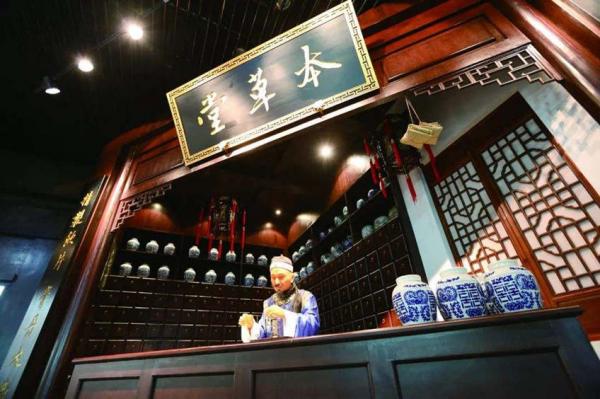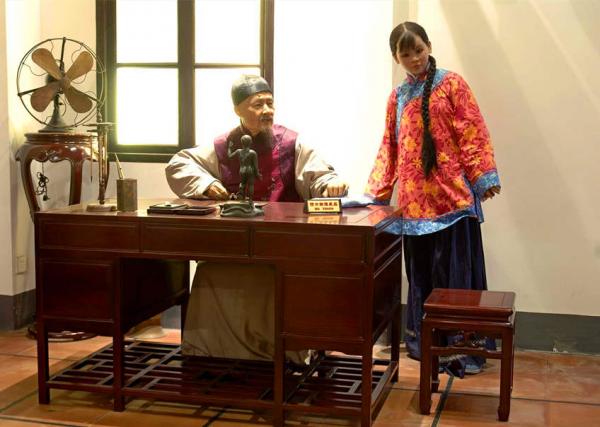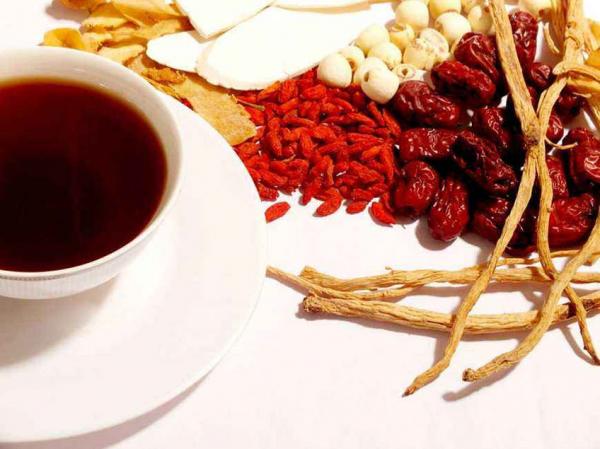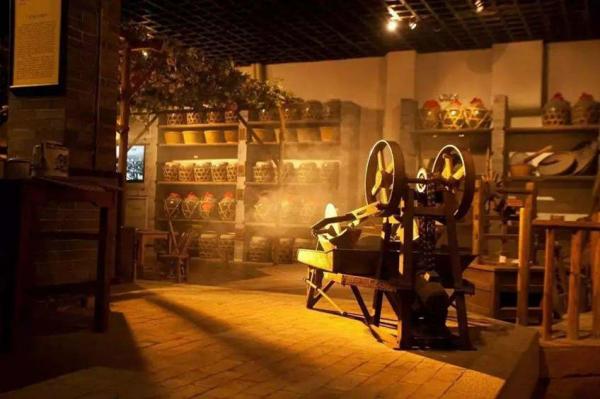Traditional Chinese Medicine (TCM)
1. What is TCM?
Traditional Chinese medicine (TCM) is a complete ancient medical system that takes a deep understanding of the laws and patterns of nature and applies them to the human body. TCM is not "New Age", nor is it a patchwork of different healing modalities. It researches dialectics, explanations why diseases occur, how to diagnose and prevent diseases, as well as how to keep the body healthy. Traditional Chinese remedies may either be taken internally or applied externally to promote the recovery of normal functioning by "administering treatment according to pattern". Thus the saying, "Western medicine treats the symptom, Chinese medicine treats the root".

2. Basic Theory of TCM
The theories of TCM are quite different from those of Western medicine. Its basic theory, including Yin and Yang, the Five-Elements, Blood and "Qi", attempts to explain the nature of life cycle and disease changes. TCM considers Nature and Human to form a single whole, and emphasizes the philosophical concept known as "The Unity of Heaven and Human". Environmental factors such as the four seasons and changes in temperature and weather are believed to influence the human body, with the body and Nature forming an integrated system. Shanghai Museum of Traditional Chinese Medicine is one of the best places to learn TCM culture and history.
Yin and Yang: The Physiology of Chinese medicine holds that the human body's life is the result of the balance of yin and yang. They are never separate; one cannot exist without the other. This is the yin/yang principle of interconnectedness and interdependence. Yin is the inner and negative principles, and yang, outer and positive. Seen from the recovery mechanism of organs, yang functions to protect from outer harm, and yin is the inner base to store and provide energy for its counterpart. The key reason why there is sickness is because the two aspects lose their harmony.
The Five Elements: According to the Five-Elements Theory, the liver and gallbladder are Wood, the heart is Fire, the spleen and stomach are Earth, the lungs and intestines are Metal, and the kidneys and bladder are Water. TCM consider that they are fundamental energies alive in nature and always in motion. These dynamic interactions enable all the Organ Systems to work in one harmonious, greater system. If their relationships are good, a state of wellness prevails; if any of the relationships become unbalanced, health problems result.
Blood and "Qi": In TCM, blood and Qi are inseparable. Qi is considered to be the force that animates and informs all things. Qi has two aspects: one is energy, power, or force; the other is conscious intelligence or information. Blood is the "mother" of Qi; it carries Qi and also provides nutrients for its movement. In turn, Qi is the "commander" of the blood. This means that Qi is the force that makes blood flow throughout the body and provides the intelligence that guides it to the places where it needs to be. Blood and Qi also affect one another and have the dynamic ability to transfer various properties back and forth.

3. Major TCM Treatment Modalities
Often Westerners derive their understanding of TCM from acupuncture. However, acupuncture is only one of the major treatment modalities of this comprehensive medical system.
Herbal medicine
Chinese herbal medicine has played an important role in people's lives. The invention and application of Chinese medicine has a history of thousand of years. It is somewhat similar to Chinese culture. It aims to prevent, diagnose and treat diseases.
It mainly consists of natural medicines and produced ones, namely medicines made from herbal, animal, mineral, some chemical substance and biological substance, which have no or little side effects. Another feature of Chinese herbal medicines is that they are mostly compound. By making the medicine with an appropriate proportion of different ingredients, the medicine can treat complicated diseases while maintaining the lowest possible side effects.
Massage
Massage, a kind of outer physiotherapy, is to apply manipulation on the channels of human body, thus preventing disease and keeping healthy. Standard manipulation and special skills are needed to do massage. The strength used should be persistent, strong, well-distributed, mild, deep and thorough. Hand is most often used for massage but foot, forearm elbow and special tools can also do.
The ways to do massage vary, such as pulling, pushing, finger pushing, rubbing, knocking, etc. The effects of massage have been affirmed by people who have experienced, that is, relieving the bones and muscles, detumescence, acesodyne, adjusting dislocation of the joints, removal of muscle spasm and so on. Besides massages for cure, there are also ones for keeping fit. For instance, kneading the acupoints around eyes can give you a good eyesight; massaging simply and exactly on the three acupoints of head can quickly relax yourself, etc.
Acupuncture
Acupuncture is the experiential summary undergoing the long-term struggle by the Chinese people. Actually it consists of two parts: operations with needles and ones with fire, both of them are essential and correlative during curing. We will come to each respectively:
Operations with Needles
This field features the pricks of needles on acupoints to adjust the organic functions and clear the energy channels of obstruction in our body. Once the needle enters into the acupoints, deep or shallow, lifted or entwisted, inserted in different frequency, all according to the techniques of experienced doctors, the miraculous effect will appear.
This kind of treatment does not do any harm to the body nor has any side effect. Doctors handling the needle freely, it is rather convenient and comfortable because it needs no special condition or facilities, except the small and thin needles. So it is easy for patients to accept.
Operations with Fire
Its origin can also be dated back to the Eolithic age. The methods in common use are moxibustion with moxa cone and cupping. The principle of cupping lies in that, when the fire in the jar is burnt, heating power ejects the air out, and the negative pressure makes the jar stick to the skin, which causes the stasis of blood to stimulate and adjust the organ functions, the moxa cone can also have this effect.
Besides these traditional methods of moxibustion, people have now improved them to be more convenient and efficient. Such as microwave needle moxibustion, electronic needle moxibustion, acupoint injection, acupoint magnetotherapy, and so on.

4. Four Methods of Diagnosis
In Chinese medicine, doctors use various methods to get full and detailed information about the patients and to guide their treatment. To treat the diseases, they use the methods of observation, auscultation and olfaction, interrogation, and pulse feeling and palpation.
ObservationTo observe, it is believed that people's outer appearance is closely linked with their internal organs. If there is something wrong with the internal organs, such changes will be reflected in their expressions and appearance. Therefore doctors can analyze the changes of the internal organ by observing the outer appearance.
Auscultation and Olfaction
By methods of auscultation and olfaction, doctors try to diagnose the disease by listening to the sound of the patients and smelling the odor of excreta released by human body. By listening to the sound of the patients, doctors can not only detect the changes of the organs related with sound, but also changes of other internal organs. Doctors can smell the odor released by patients. It is believed that when viruses attack human body, people's internal organs and blood will be affected, thus their body fluid and excreta will release bad smell.
Interrogation
By interrogation, doctor will talk to the patients or someone who know the diseases to get the information about how the disease occurs, how it develops, its current symptoms and how it is treated. This method is useful when there are no obvious symptoms from the patients' outer appearance. Also, by interrogating, doctors can obtain other indirect information related with the disease, such as the patients' daily life, working environment, food preference and marriage status.Pulse Feeling and Palpation
Doctors use the method of pulse feeling and palpation by touching or pressing the patient's pulse. It is believed that changes inside the body are reflected by the changes of the pulse activity. Sometimes doctors press the skin of certain part of the body to identify the nature and the severity of the disease inside certain part of the body.
